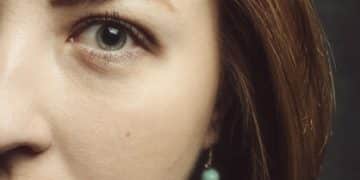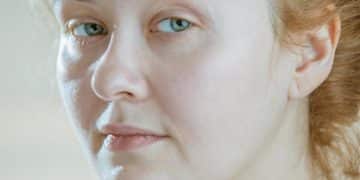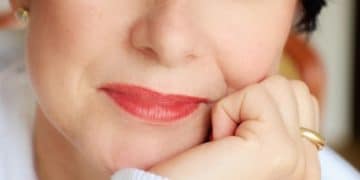How to Get Rid of Blackheads and Whiteheads: Your 2025 Guide

Discover the latest and most effective strategies to eliminate blackheads and whiteheads in 2025, including advanced skincare routines, innovative products, and expert tips for achieving clear and healthy skin.
Are you tired of looking in the mirror and seeing those pesky blackheads and whiteheads staring back at you? You’re not alone. Achieving clear skin can feel like an uphill battle, but with the right knowledge and a consistent skincare routine, it’s entirely possible to say goodbye to those unwanted blemishes. This 2025 guide will arm you with the most up-to-date information on how to get rid of blackheads and whiteheads and achieve the clear, radiant complexion you’ve always wanted.
Understanding Blackheads and Whiteheads
Before diving into the solutions, it’s essential to understand what blackheads and whiteheads are and why they appear. Both are forms of acne, but they differ in their appearance and how they interact with the air.
Blackheads and whiteheads form when dead skin cells and oils clog hair follicles. The difference lies in whether the pore is open or closed.
What are Blackheads?
Blackheads, also known as open comedones, occur when the pore is open, and the trapped sebum (oil) and dead skin cells are exposed to air. This exposure leads to oxidation, causing the characteristic black color.
What are Whiteheads?
Whiteheads, or closed comedones, are similar to blackheads, but the pore remains closed. This prevents the trapped material from oxidizing, resulting in a white or flesh-colored bump on the skin’s surface.
Factors Contributing to Blackheads and Whiteheads
Several factors can contribute to the formation of blackheads and whiteheads, including:
- Excess oil production: Overactive sebaceous glands can lead to clogged pores.
- Inadequate exfoliation: A buildup of dead skin cells can block pores.
- Hormonal changes: Hormonal fluctuations, such as those during puberty or menstruation, can increase oil production.
- Cosmetics and skincare products: Some products can clog pores or irritate the skin, leading to breakouts.
Understanding these factors is the first step in preventing and treating blackheads and whiteheads effectively. By addressing the root causes, you can minimize their occurrence and maintain clearer skin. In the following sections, we will explore practical methods for removing and preventing these blemishes.
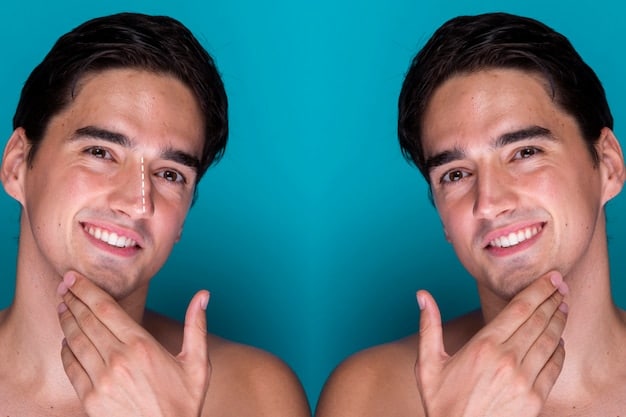
Effective Skincare Routines for Clear Skin
Establishing a consistent and effective skincare routine is crucial for preventing and treating blackheads and whiteheads. This routine should focus on cleansing, exfoliating, and moisturizing, while also addressing any specific concerns or skin types.
The foundation of any good skincare routine is a gentle yet effective cleanser. Look for products that are non-comedogenic, meaning they won’t clog pores, and designed for your specific skin type.
Cleansing Twice Daily
Wash your face twice a day, in the morning and before bed, to remove excess oil, dirt, and makeup. Over-washing can strip your skin of its natural oils, leading to dryness and irritation, so it’s important to strike a balance.
Exfoliating Regularly
Exfoliation helps to remove dead skin cells that can clog pores and contribute to blackheads and whiteheads. There are two main types of exfoliants: physical and chemical.
- Physical exfoliants: These include scrubs with small beads or brushes that manually remove dead skin cells. Be gentle to avoid irritation.
- Chemical exfoliants: These use acids like salicylic acid or glycolic acid to dissolve dead skin cells. They can be more effective and less abrasive than physical exfoliants.
Moisturizing is Key
Even if you have oily skin, moisturizing is essential. Choose a lightweight, non-comedogenic moisturizer to keep your skin hydrated without clogging pores. Hydrated skin is healthier and better able to regulate oil production.
The Importance of Sunscreen
Protecting your skin from the sun is vital, especially when using exfoliants that can make your skin more sensitive to UV rays. Use a broad-spectrum sunscreen with an SPF of 30 or higher every day, even on cloudy days.
By incorporating these essential steps into your daily skincare routine, you can significantly reduce the occurrence of blackheads and whiteheads. Remember to be patient and consistent, as it may take several weeks to see noticeable improvements. In the next section, we’ll explore specific products and ingredients that can help target these blemishes.
Topical Treatments and Ingredients to Look For
In addition to a consistent skincare routine, several topical treatments and ingredients can help target blackheads and whiteheads. These products often contain active ingredients that work to unclog pores, reduce inflammation, and prevent future breakouts.
When choosing products, it’s essential to consider your skin type and any sensitivities. Introducing new products gradually can help you monitor how your skin reacts and avoid irritation.
Salicylic Acid
Salicylic acid is a beta-hydroxy acid (BHA) that is oil-soluble, allowing it to penetrate pores and dissolve the dead skin cells and sebum that contribute to blackheads and whiteheads. It’s available in various forms, including cleansers, toners, and spot treatments.
Benzoyl Peroxide
Benzoyl peroxide is an antibacterial agent that helps reduce inflammation and kill acne-causing bacteria. It’s particularly effective for treating inflammatory acne, but it can also help with blackheads and whiteheads by reducing the overall bacterial load on the skin.
Retinoids
Retinoids, such as tretinoin and adapalene, are vitamin A derivatives that help increase cell turnover and prevent clogged pores. They can be particularly effective for treating and preventing blackheads and whiteheads, but they can also cause dryness and irritation, so it’s important to use them as directed and gradually introduce them into your routine.
- Start with a low concentration: Begin with a lower percentage of retinoid to assess your skin’s tolerance.
- Use at night: Retinoids can make your skin more sensitive to the sun, so it’s best to use them at night.
- Moisturize: Follow up with a moisturizer to combat potential dryness and irritation.
Clay Masks
Clay masks can help draw out impurities and excess oil from the pores. Look for masks containing ingredients like bentonite or kaolin clay, which are known for their absorbent properties. Use these masks once or twice a week for best results.
Incorporating these topical treatments and ingredients into your skincare routine can significantly improve the appearance of blackheads and whiteheads. However, it’s important to be patient and consistent, as it may take several weeks to see noticeable results. In the next section, we will explore professional treatments that can help to further address these blemishes.
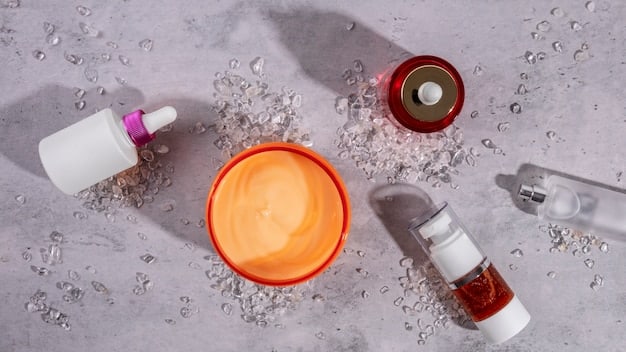
Professional Treatments for Stubborn Blackheads and Whiteheads
When over-the-counter products aren’t enough, professional treatments can provide a more intensive approach to removing stubborn blackheads and whiteheads. These treatments are typically performed by dermatologists or licensed estheticians and can offer more immediate and effective results.
Before seeking professional treatment, it’s important to consult with a skincare professional to determine the best approach for your specific skin type and concerns.
Microdermabrasion
Microdermabrasion is a non-invasive procedure that uses a special machine to exfoliate the top layer of skin, removing dead skin cells and unclogging pores. It can help improve the overall texture and appearance of the skin, reducing the visibility of blackheads and whiteheads.
Chemical Peels
Chemical peels use a chemical solution to exfoliate the skin, removing dead skin cells and stimulating collagen production. They can be effective for treating acne, including blackheads and whiteheads, and can also help improve the appearance of fine lines and wrinkles.
Extraction
Professional extraction involves manually removing blackheads and whiteheads using specialized tools. This should only be performed by a trained professional to avoid damaging the skin or causing scarring. They use sterile techniques to ensure that the pores are properly cleaned without causing inflammation or infection.
- Gentle technique: Professionals use a gentle technique to avoid damaging the skin.
- Sterile tools: Sterile tools are used to prevent infection.
- Proper preparation: The skin is properly prepared to soften the pores and make extractions easier.
Laser Treatments
Laser treatments can target acne-causing bacteria and reduce oil production, helping to prevent blackheads and whiteheads. These treatments can also stimulate collagen production, improving the overall texture and appearance of the skin. There are various types of laser treatments available, and a dermatologist can recommend the best option for your specific needs.
Professional treatments can provide significant improvements in the appearance of blackheads and whiteheads. However, they are often more expensive and may require multiple sessions to achieve optimal results. It’s important to weigh the pros and cons and discuss your options with a skincare professional before proceeding. In the next section, we’ll explore lifestyle changes that can support your skincare efforts.
Lifestyle Changes to Support Clear Skin
While skincare routines and professional treatments play a significant role in managing blackheads and whiteheads, lifestyle factors can also have a considerable impact on your skin’s health. Making certain changes to your daily habits can support your skincare efforts and help prevent future breakouts.
These changes, combined with a consistent skincare routine, can create a holistic approach to achieving clear, healthy skin.
Diet and Hydration
A balanced diet rich in fruits, vegetables, and whole grains can provide your skin with the essential nutrients it needs to stay healthy. Staying hydrated by drinking plenty of water helps to flush out toxins and keep your skin hydrated from the inside out. Some studies suggest that certain foods, such as dairy and high-glycemic index foods, may contribute to acne in some individuals, so it’s worth paying attention to how your skin reacts to different foods.
Stress Management
Stress can trigger hormonal changes that lead to increased oil production and breakouts. Finding healthy ways to manage stress, such as exercise, meditation, or spending time in nature, can help keep your skin clear. Regular exercise also improves blood circulation, which can promote healthier skin.
Avoid Touching Your Face
Throughout the day, your hands come into contact with various surfaces, picking up dirt and bacteria. Touching your face can transfer these impurities to your skin, clogging pores and leading to breakouts. Be mindful of this habit and try to avoid touching your face as much as possible.
- Wash your hands frequently: Keep your hands clean to minimize the transfer of dirt and bacteria.
- Use clean towels and pillowcases: Regularly wash your towels and pillowcases to prevent bacteria buildup.
Choose Non-Comedogenic Products
When selecting cosmetics and skincare products, opt for those labeled as non-comedogenic, meaning they are formulated to not clog pores. This is particularly important for foundations, concealers, and sunscreens, which are applied to the entire face.
By incorporating these lifestyle changes into your daily routine, you can support your skincare efforts and promote clearer, healthier skin. Remember that consistency is key, and it may take time to see noticeable improvements. In the next section, we will discuss common myths and misconceptions about blackheads and whiteheads.
Debunking Common Myths About Blackheads and Whiteheads
There are many misconceptions surrounding blackheads and whiteheads, which can lead to ineffective or even harmful skincare practices. It’s important to separate fact from fiction to ensure you’re taking the best possible care of your skin.
Understanding the truth behind these myths can prevent you from making common mistakes and help you achieve clearer skin more effectively.
Myth: Blackheads are Caused by Dirt
Fact: Blackheads are not caused by dirt. The dark color is due to oxidation of the sebum and dead skin cells trapped in the pore. Washing your face more frequently won’t necessarily prevent blackheads; in fact, over-washing can strip your skin of its natural oils and lead to irritation.
Myth: You Can Squeeze Blackheads and Whiteheads Out Yourself
Fact: While it may be tempting to squeeze blackheads and whiteheads, doing so can damage the skin, cause inflammation, and lead to scarring. Professional extraction is the safest and most effective way to remove these blemishes without causing harm.
Myth: Tanning Clears Up Acne
Fact: Tanning can temporarily mask the appearance of acne, but it doesn’t actually clear it up. In fact, sun exposure can damage the skin and increase the risk of premature aging and skin cancer. Always use sunscreen to protect your skin from the sun.
- Use broad-spectrum sunscreen: Protect your skin from both UVA and UVB rays.
- Reapply frequently: Reapply sunscreen every two hours, or more often if swimming or sweating.
Myth: All Blackhead and Whitehead Treatments Work for Everyone
Fact: Skincare is not one-size-fits-all. What works for one person may not work for another. It’s important to consider your skin type, sensitivities, and specific concerns when choosing treatments. Consulting with a dermatologist or esthetician can help you find the best approach for your individual needs.
By understanding the truth behind these common myths, you can make more informed decisions about your skincare routine and avoid practices that could potentially harm your skin. Remember to seek advice from skincare professionals and always prioritize gentle and effective treatments. Now let’s recap the main points of our guide with a summary table.
| Key Point | Brief Description |
|---|---|
| 💧 Daily Cleansing | Wash your face twice daily with a gentle, non-comedogenic cleanser. |
| exfoliation | Exfoliate regularly using physical or chemical exfoliants to remove dead skin cells. |
| ☀️ Sun Protection | Use broad-spectrum sunscreen daily to protect your skin. |
| 🧴 Topical Treatments | Incorporate salicylic acid, benzoyl peroxide, or retinoids into your routine. |
Frequently Asked Questions (FAQ)
Blackheads and whiteheads are caused by clogged pores, where dead skin cells and sebum get trapped. Blackheads occur when the pore is open and the material oxidizes, while whiteheads occur when the pore remains closed.
Exfoliate 2-3 times a week, depending on your skin’s sensitivity. Over-exfoliating can lead to irritation and dryness. Adjust the frequency based on how your skin responds to the treatment.
Yes, diet can play a role. Some studies suggest that dairy and high-glycemic index foods may contribute to acne in some people. A balanced diet can support overall skin health.
Not always, but they can be beneficial for stubborn cases. If over-the-counter products aren’t working, consider microdermabrasion, chemical peels, or extractions performed by a professional.
Look for products containing salicylic acid, benzoyl peroxide, or retinoids. These ingredients help unclog pores, reduce inflammation, and prevent future breakouts. Choose non-comedogenic options.
Conclusion
By following this 2025 guide, you’re now equipped with the knowledge and tools to effectively combat blackheads and whiteheads. Remember, consistency and patience are key to achieving clear and healthy skin. Embrace these strategies, and you’ll be well on your way to a radiant, blemish-free complexion.
